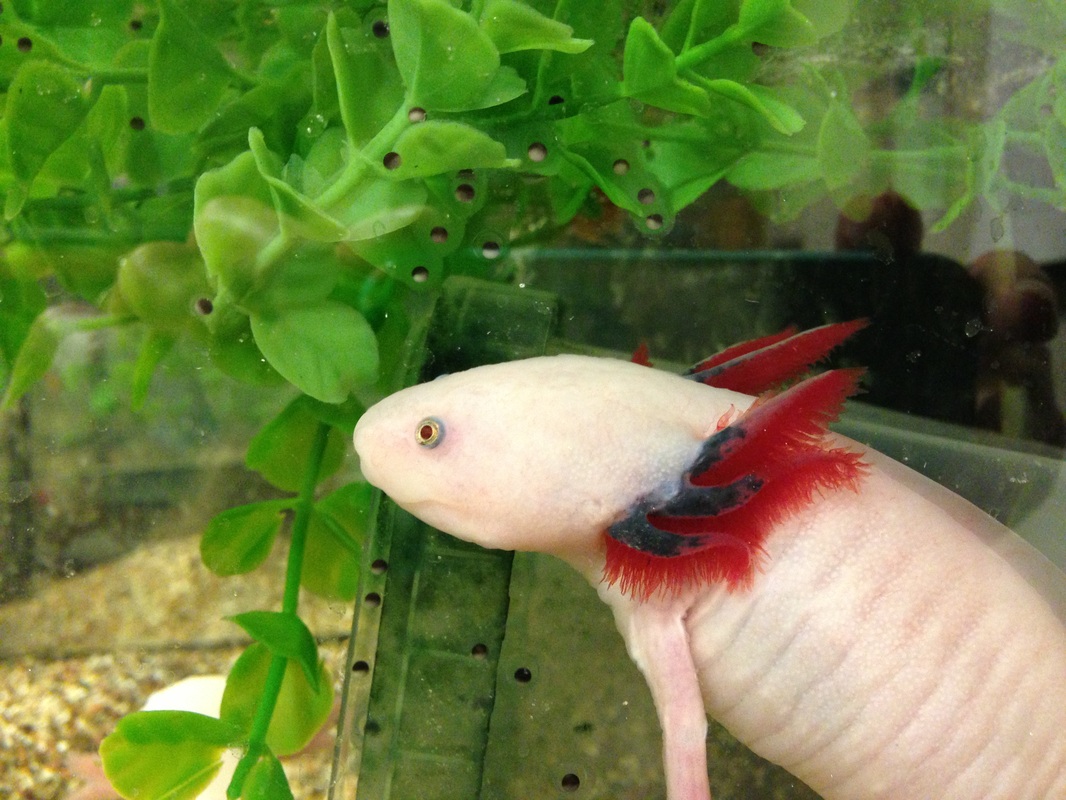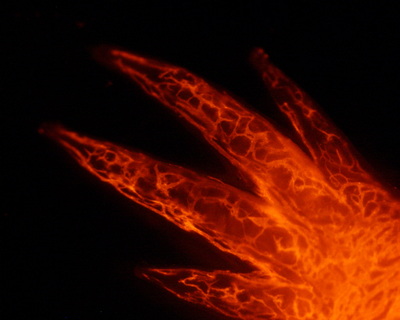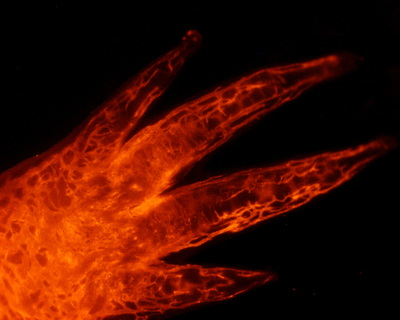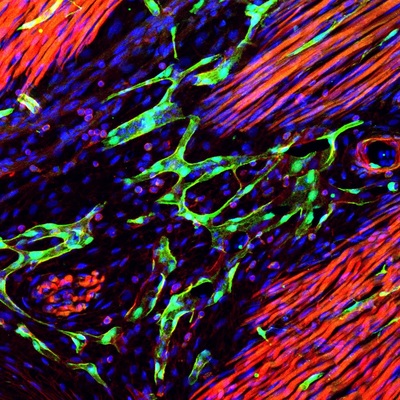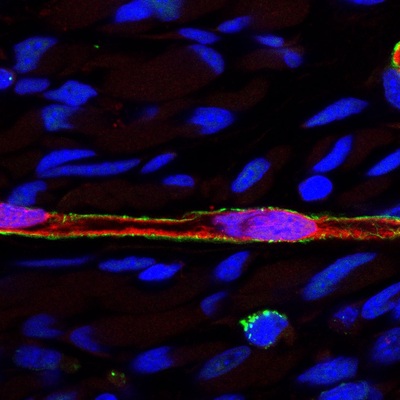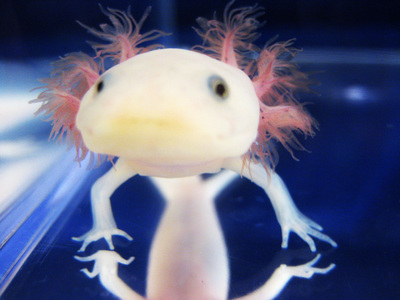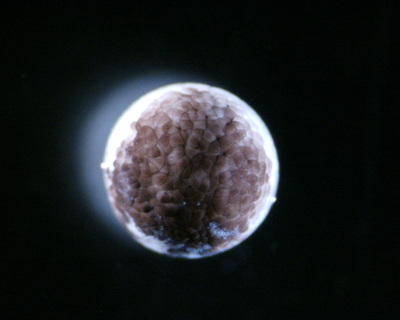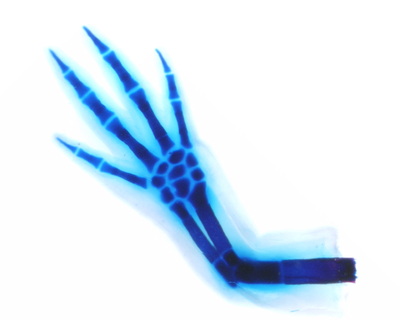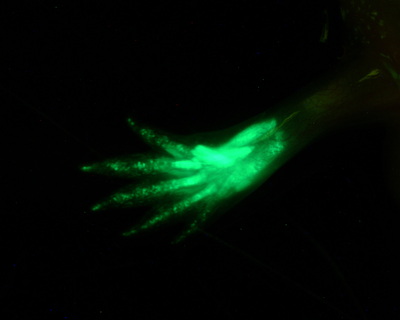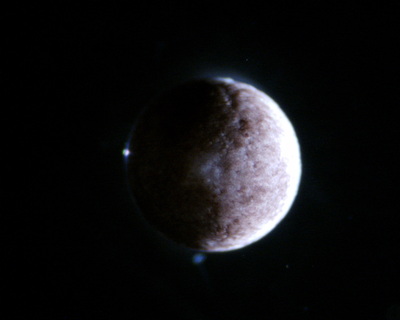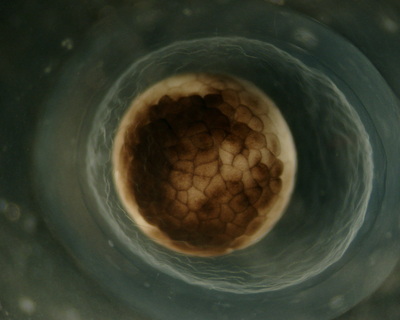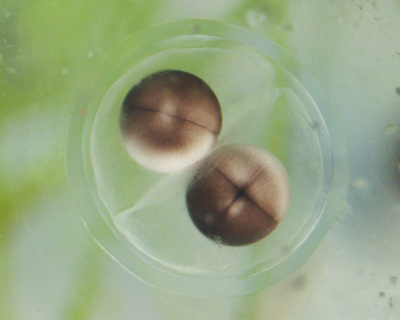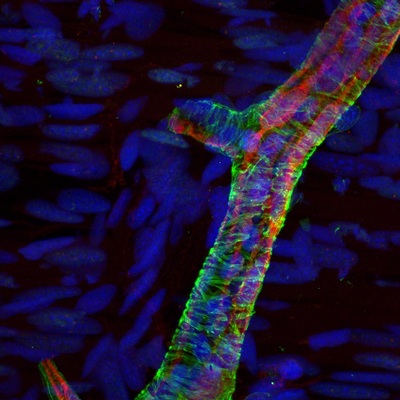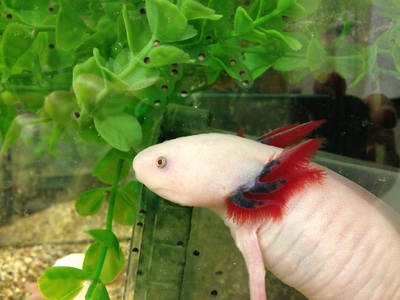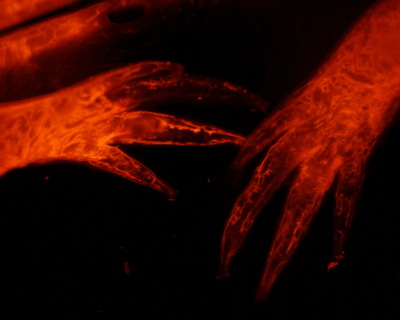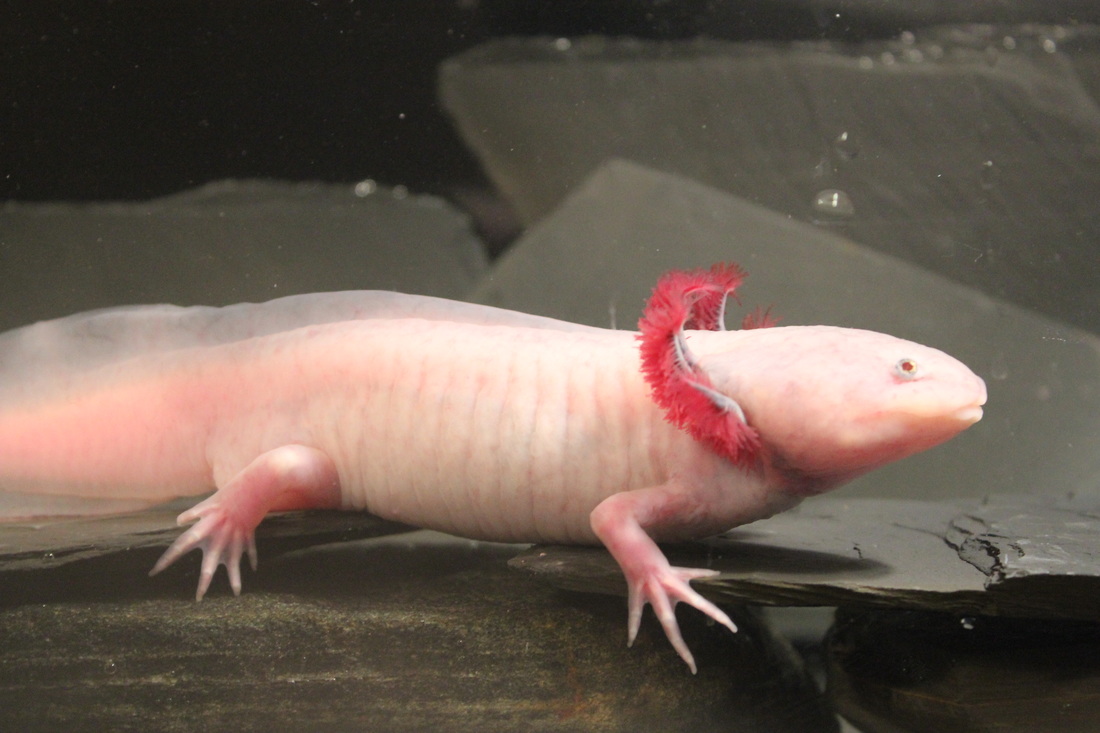Humans and other mammals have extremely limited regenerative capabilities in key parts such as limbs. Nearly two million Americans are currently living with the consequences of having undergone limb amputation due to injury or disease, and this number is expected to rise. No biological therapeutic has been devised to address this problem. In contrast, axolotl salamanders can replace entire lost limbs throughout life, and these limbs are anatomically similar to human limbs. This amazing feat presents an opportunity to learn about natural cellular reprogramming in animals. While axolotl limb regeneration has been known for centuries, much of the crucial mechanistic detail at the molecular level has remained elusive. We have developed powerful tools to investigate limb regeneration in axolotls with the hope that understanding how limb regeneration occurs in these animals will provide information critical for designing efforts to stimulate regeneration in humans. A crucial question is how the animals use the blastema, a collection of relatively dedifferentiated cells and stem cells derived from stump tissues, to orchestrate the regeneration of an entire limb. Mammals do not respond to most amputations by creating blastemas, and this difference may underlie their inability to regenerate. In the Whited lab, we aim to understand the molecular mechanisms at work in the axolotl blastema so that we can later understand why mammals cannot regenerate limbs.
Our laboratory is taking several approaches aimed at understanding how blastemas facilitate regeneration. One key question is how blastema cells keep from differentiating. A second key question is how blastema cells keep track of what tissues beget them, and what types of daughter cells they can produce. We are also interested in identifying the tissues that support the essential elements of blastema cells such as their formation and proliferation. To examine these questions, we are using retroviral infections, transgenesis, and knock-down approaches to analyze the function of genes we have identified in sequencing efforts. We hope that this work will lead to an improved understanding of the basic biology at work in blastemas in these highly-regenerative organisms, providing a framework to approach the roles of these factors in organisms with more restricted natural regenerative abilities.
Our laboratory is taking several approaches aimed at understanding how blastemas facilitate regeneration. One key question is how blastema cells keep from differentiating. A second key question is how blastema cells keep track of what tissues beget them, and what types of daughter cells they can produce. We are also interested in identifying the tissues that support the essential elements of blastema cells such as their formation and proliferation. To examine these questions, we are using retroviral infections, transgenesis, and knock-down approaches to analyze the function of genes we have identified in sequencing efforts. We hope that this work will lead to an improved understanding of the basic biology at work in blastemas in these highly-regenerative organisms, providing a framework to approach the roles of these factors in organisms with more restricted natural regenerative abilities.
Limb Regeneration Publications:
Sousounis, K., Bryant, D. M., Martinez Fernandez, J., Eddy, S. S., Tsai, S. L., Gundberg, G. C., Han, J., Courtemanche, K., Levin, M., and Whited, J. L. Eya2 promotes cell cycle progression by regulating DNA damage response during vertebrate limb regeneration. eLife, published online March 6, 2020: https://elifesciences.org/articles/51217
Leigh, N. D., Sessa, S., Dragalzew, A. C., Payzin-Dogru, D., Sousa, J. F., Aggouras, A. N., Johnson, K., Dunlap, G. S., Haas, B. J., Levin, M., Schneider, I., and Whited, J. L. Von Willebrand Factor D and EGF Domains is an evolutionarily conserved and required feature of blastemas capable of multi-tissue appendage regeneration. Evolution & Development, published online March 12, 2020: https://onlinelibrary.wiley.com/doi/full/10.1111/ede.12332
Leigh, N. D., Dunlap, G. S., Johnson, K., Mariano, R., Oshiro, R., Wong, A. Y., Bryant, D. M., Miller, B. M., Ratner, A., Chen, A., Ye, W., Haas, B. J., & Whited, J. L. 2018. Transcriptomic landscape of the blastema niche in regenerating adult axolotl limbs at single-cell resolution. Nature Communications, 9:5153.
Bryant, D. M., Sousounis, K., Payzin-Dogru, D., Bryant, S., Sandoval, A. G. W., Martinez Fernandez, J., Mariano, R., Oshiro, R., Wong, A. Y., Leigh, N. D., Johnson, K., & Whited, J. L. 2017. Identification of regenerative roadblocks by repeat deployment of limb regeneration in axolotls. npj Regenerative Medicine, 2, 30(2017).
Johnson, K., Bateman, J., DiTommaso, T., Wong, A.Y., & Whited, J.L. 2017. Systemic cell cycle activation is induced following complex tissue injury in axolotl. Developmental Biology, ePub Oct 27, 2017.
Saltman, A. J., Barakat, M. K., Bryant, D. M., Brodovskaya, A., & Whited, J. L. 2017. DiI perfusion as a method for vascular visualization in Ambystoma mexicanum. Journal of Visualized Experiments, vol. 124.
Bryant, D. M., Sousounis, K., Farkas, J. E., Bryant, S., Thao, N., Guzikowski, A. R., Monaghan, J. R., Levin, M., & Whited, J. L. 2017. Repeated removal of developing limb buds permanently reduces appendage size in the highly-regenerative axolotl. Developmental Biology, 424(1)1-9.
Bryant, D. M., Johnson, K., DiTommaso, T., Tickle, T., Couger, M. B., Payzin-Dogru, D., Lee, T. J., Leigh, N. D., Kuo, T.-H., Davis, F., Bateman, J., Bryant, S., Guzikowski, A. R., Tsai, S. L., Coyne, S., Ye, W., Freeman, Jr., R. M., Peshkin, L., Tabin, C. J., Regev, A., Haas, B. J., & Whited, J. L. 2017. A tissue-mapped axolotl de novo transcriptome enables identification of limb regeneration factors. Cell Reports, 18(3)762-776.
Farkas, J. E., Freitas, P. D., Bryant, D. M., Whited, J. L., and Monaghan, J. R. 2016. Neuregulin-1 signaling is essential for nerve-dependent axolotl limb regeneration. Development, 143:2724-2731.
Kuo, T.-H., Kowalko, J. E., DiTommaso, T., Nyambi, M., Montoro, D. T., Essner, J. J., and Whited, J. L. 2015. TALEN-mediated gene editing of the thrombospondin-1 locus in axolotl. Regeneration, 2(1):37-43. http://onlinelibrary.wiley.com/doi/10.1002/reg2.29/abstract
Kuo, T.-H., and Whited, J. L. 2015. Pseudotyped retroviruses for infecting axolotl. Salamanders in Regeneration Research: Methods and Protocols, Methods in Molecular Biology Series. Edited by A. Kumar and M. Simon. Springer Press, USA. In press.
Whited, J. L., Tsai, S. L., Beier, K. T., White, J. N., Piekarski, N., Hanken, J., Cepko, C. L., and Tabin, C. J. 2013. Pseudotyped retroviruses for infection of axolotl in vivo and in vitro. Development, 140(5):1137-1146. PMC3583047.
Whited, J. L.*, Lehoczky, J. A.*, and Tabin, C. J. 2012. Inducible genetic system for the axolotl. Proceedings of the National Academy of Science, 109:13662-12667. PMC3427111. *equal contribution.
Whited, J. L., Lehoczky, J. A., Austin, C. A., and Tabin, C. J. 2011. Dynamic expression of two thrombospondins during axolotl limb regeneration. Developmental Dynamics, 240(5):1249-1258. PMC3081376.
Reviews:
Wong, A. Y., and Whited, J. L. 2020. Parallels between wound healing, epimorphic regeneration, and solid tumors. Development, 147(1):1-15.
Payzin-Dogru, D., and Whited, J. L. 2018. An integrative framework for salamander and mouse limb regeneration. Int’l Journal of Developmental Biology, 62:(6-7-8). PMID: 29943379.
Haas, B. J., and Whited, J. L. 2017. Advances in decoding axolotl limb regeneration. Trends in Genetics. Epub June 22. https://authors.elsevier.com/a/1VOmbcQbInnAK
Whited, J. L., and Tabin, C. J. 2009. Limb regeneration revisited. Journal of Biology, 8(1):5. PMC2656220.
Whited, J. L., and Tabin, C. J. 2010. Regeneration review reprise. Journal of Biology, 9(2):15. PMC2871519.
Funding:
Brigham & Women's Hospital, Smith Family Foundation, March of Dimes, NICHD, NIAMS, The Paul G. Allen Frontiers Group
STAT piece explaining our work:
https://www.statnews.com/2016/08/25/limbs-regeneration-science-salamanders/
Video link including a regenerating axolotl limb and general theme of our studies:
https://www.youtube.com/watch?v=wBaTdHNXPm8
Jessica talking about limb regeneration on the radio:
http://espn.go.com/espnradio/play?id=12324855
Lab's research highlighted on the NIH Director's Blog:
https://directorsblog.nih.gov/2016/04/21/creative-minds-can-salamanders-show-us-how-to-regrow-limbs/#more-5898
Link to the Allen Discovery Center at Tufts University:
http://alleninstitute.org/what-we-do/frontiers-group/discovery-centers/allen-discovery-center-tufts-university/team-allen-discovery-center-tufts-university/
Miscellaneous:
https://bwhclinicalandresearchnews.org/2016/02/02/life-long-passion-for-nature-outdoors-inspires-researcher/?utm_source=mailchimp&utm_medium=body&utm_campaign=Whited
http://bwhbulletin.org/2016/03/03/lifelong-passion-for-nature-outdoors-inspires-researcher/
Sousounis, K., Bryant, D. M., Martinez Fernandez, J., Eddy, S. S., Tsai, S. L., Gundberg, G. C., Han, J., Courtemanche, K., Levin, M., and Whited, J. L. Eya2 promotes cell cycle progression by regulating DNA damage response during vertebrate limb regeneration. eLife, published online March 6, 2020: https://elifesciences.org/articles/51217
Leigh, N. D., Sessa, S., Dragalzew, A. C., Payzin-Dogru, D., Sousa, J. F., Aggouras, A. N., Johnson, K., Dunlap, G. S., Haas, B. J., Levin, M., Schneider, I., and Whited, J. L. Von Willebrand Factor D and EGF Domains is an evolutionarily conserved and required feature of blastemas capable of multi-tissue appendage regeneration. Evolution & Development, published online March 12, 2020: https://onlinelibrary.wiley.com/doi/full/10.1111/ede.12332
Leigh, N. D., Dunlap, G. S., Johnson, K., Mariano, R., Oshiro, R., Wong, A. Y., Bryant, D. M., Miller, B. M., Ratner, A., Chen, A., Ye, W., Haas, B. J., & Whited, J. L. 2018. Transcriptomic landscape of the blastema niche in regenerating adult axolotl limbs at single-cell resolution. Nature Communications, 9:5153.
Bryant, D. M., Sousounis, K., Payzin-Dogru, D., Bryant, S., Sandoval, A. G. W., Martinez Fernandez, J., Mariano, R., Oshiro, R., Wong, A. Y., Leigh, N. D., Johnson, K., & Whited, J. L. 2017. Identification of regenerative roadblocks by repeat deployment of limb regeneration in axolotls. npj Regenerative Medicine, 2, 30(2017).
Johnson, K., Bateman, J., DiTommaso, T., Wong, A.Y., & Whited, J.L. 2017. Systemic cell cycle activation is induced following complex tissue injury in axolotl. Developmental Biology, ePub Oct 27, 2017.
Saltman, A. J., Barakat, M. K., Bryant, D. M., Brodovskaya, A., & Whited, J. L. 2017. DiI perfusion as a method for vascular visualization in Ambystoma mexicanum. Journal of Visualized Experiments, vol. 124.
Bryant, D. M., Sousounis, K., Farkas, J. E., Bryant, S., Thao, N., Guzikowski, A. R., Monaghan, J. R., Levin, M., & Whited, J. L. 2017. Repeated removal of developing limb buds permanently reduces appendage size in the highly-regenerative axolotl. Developmental Biology, 424(1)1-9.
Bryant, D. M., Johnson, K., DiTommaso, T., Tickle, T., Couger, M. B., Payzin-Dogru, D., Lee, T. J., Leigh, N. D., Kuo, T.-H., Davis, F., Bateman, J., Bryant, S., Guzikowski, A. R., Tsai, S. L., Coyne, S., Ye, W., Freeman, Jr., R. M., Peshkin, L., Tabin, C. J., Regev, A., Haas, B. J., & Whited, J. L. 2017. A tissue-mapped axolotl de novo transcriptome enables identification of limb regeneration factors. Cell Reports, 18(3)762-776.
Farkas, J. E., Freitas, P. D., Bryant, D. M., Whited, J. L., and Monaghan, J. R. 2016. Neuregulin-1 signaling is essential for nerve-dependent axolotl limb regeneration. Development, 143:2724-2731.
Kuo, T.-H., Kowalko, J. E., DiTommaso, T., Nyambi, M., Montoro, D. T., Essner, J. J., and Whited, J. L. 2015. TALEN-mediated gene editing of the thrombospondin-1 locus in axolotl. Regeneration, 2(1):37-43. http://onlinelibrary.wiley.com/doi/10.1002/reg2.29/abstract
Kuo, T.-H., and Whited, J. L. 2015. Pseudotyped retroviruses for infecting axolotl. Salamanders in Regeneration Research: Methods and Protocols, Methods in Molecular Biology Series. Edited by A. Kumar and M. Simon. Springer Press, USA. In press.
Whited, J. L., Tsai, S. L., Beier, K. T., White, J. N., Piekarski, N., Hanken, J., Cepko, C. L., and Tabin, C. J. 2013. Pseudotyped retroviruses for infection of axolotl in vivo and in vitro. Development, 140(5):1137-1146. PMC3583047.
Whited, J. L.*, Lehoczky, J. A.*, and Tabin, C. J. 2012. Inducible genetic system for the axolotl. Proceedings of the National Academy of Science, 109:13662-12667. PMC3427111. *equal contribution.
Whited, J. L., Lehoczky, J. A., Austin, C. A., and Tabin, C. J. 2011. Dynamic expression of two thrombospondins during axolotl limb regeneration. Developmental Dynamics, 240(5):1249-1258. PMC3081376.
Reviews:
Wong, A. Y., and Whited, J. L. 2020. Parallels between wound healing, epimorphic regeneration, and solid tumors. Development, 147(1):1-15.
Payzin-Dogru, D., and Whited, J. L. 2018. An integrative framework for salamander and mouse limb regeneration. Int’l Journal of Developmental Biology, 62:(6-7-8). PMID: 29943379.
Haas, B. J., and Whited, J. L. 2017. Advances in decoding axolotl limb regeneration. Trends in Genetics. Epub June 22. https://authors.elsevier.com/a/1VOmbcQbInnAK
Whited, J. L., and Tabin, C. J. 2009. Limb regeneration revisited. Journal of Biology, 8(1):5. PMC2656220.
Whited, J. L., and Tabin, C. J. 2010. Regeneration review reprise. Journal of Biology, 9(2):15. PMC2871519.
Funding:
Brigham & Women's Hospital, Smith Family Foundation, March of Dimes, NICHD, NIAMS, The Paul G. Allen Frontiers Group
STAT piece explaining our work:
https://www.statnews.com/2016/08/25/limbs-regeneration-science-salamanders/
Video link including a regenerating axolotl limb and general theme of our studies:
https://www.youtube.com/watch?v=wBaTdHNXPm8
Jessica talking about limb regeneration on the radio:
http://espn.go.com/espnradio/play?id=12324855
Lab's research highlighted on the NIH Director's Blog:
https://directorsblog.nih.gov/2016/04/21/creative-minds-can-salamanders-show-us-how-to-regrow-limbs/#more-5898
Link to the Allen Discovery Center at Tufts University:
http://alleninstitute.org/what-we-do/frontiers-group/discovery-centers/allen-discovery-center-tufts-university/team-allen-discovery-center-tufts-university/
Miscellaneous:
https://bwhclinicalandresearchnews.org/2016/02/02/life-long-passion-for-nature-outdoors-inspires-researcher/?utm_source=mailchimp&utm_medium=body&utm_campaign=Whited
http://bwhbulletin.org/2016/03/03/lifelong-passion-for-nature-outdoors-inspires-researcher/
